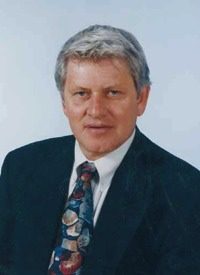
1994: A boy “about the age of 10,” identified as Victim 7 in the grand jury report, met Penn State defensive coordinator Sandusky and subsequently reported that he was subjected to a series of unwanted sexual advances. The boy was from The Second Mile, a charity founded by Sandusky to help at-risk kids from dysfunctional or absent families.
1996-1998: Victim 5 and Victim 6, “8 to 10 years old” and “11 years old,” respectively, were taken to locker rooms and showers by Sandusky, according to grand jury testimony. Both boys met Sandusky when they were in second or third grade. The mother of Victim 6 complained to university police about Sandusky showering with her son and inappropriate touching. After investigating, no charges were filed by Centre County district attorney Ray Gricar (gone missing since 2005, along with his computer’s hard drive).
1999: Sandusky retired from Penn State and was awarded emeritus status, a campus office, and access to all Penn State facilities. A young boy, known as Victim 4, was repeatedly subjected, according to grand jury testimony, to indecent assault and involuntary deviate sexual intercourse. The boy accompanied Sandusky to the Alamo Bowl in Texas.
2000: A Penn State janitor discovered Sandusky in a sex act in a shower room with Victim 8, a young boy, according to grand jury testimony, and reported the incident to janitorial staff members.
2002: Penn State graduate assistant Mike McQueary reported that he discovered Sandusky in a shower room performing a sex act on a boy about 10 years of age, identified as Victim 2 in the grand jury report. McQueary met with Joe Paterno about the incident the next morning, Paterno notified Penn State athletic director Tim Curley of McQueary’s accusation the following day, and McQueary subsequently met with Curley and Penn State’s senior vice president for finance and business Gary Schultz. Curley told McQueary that Sandusky’s locker room keys had been taken away. McQueary wasn’t questioned by university police and Curley and Schultz did not report the alleged incident to authorities.
2007: Sandusky befriended a young boy from The Second Mile, identified as Victim 1 in the grand jury report, and arranged weekly meetings and overnight stays at his residence. The boy testified that Sandusky performed sex acts on him on multiple occasions.
2011: Sandusky, still with access to Penn State’s facilities as late as the first of November, is charged with child endangerment, involuntary deviate sexual intercourse, aggravated indecent assault, and corruption of minors – 40 counts in all, 21 of them felonies. Penn State officials Curley and Schultz are each charged with felony perjury for lying to grand jury investigators and failure to report child-abuse allegations to authorities. Both plead not guilty.
So why didn’t someone notice more, or do more? Legally, the bare minimum was done, nothing was fixed, and Jerry Sandusky continued to have sleepovers with the kids.
“Humans are highly skilled at suppressing inconvenient or dangerous thoughts,” wrote Erich Vieth in an essay entitled "Moral Blinders and the Banality of Evil: What you don’t ponder won’t disturb your conscience."
In the Sandusky case, people filtered out what they didn’t want to think about, filtered out the reality of what was repeatedly being done to young children.
“It takes courage to expose one’s self to information that challenges one’s pre-existing beliefs,” explained Vieth.
It’s exactly that form of courage that was missing at Penn State.
Ralph R. Reiland is an associate professor of economics and the B. Kenneth Simon professor of free enterprise at Robert Morris University in Pittsburgh.


